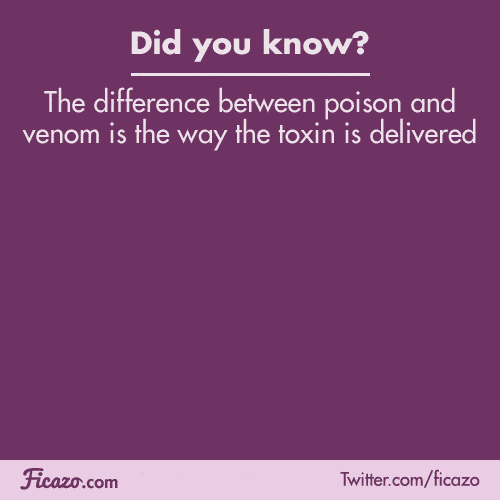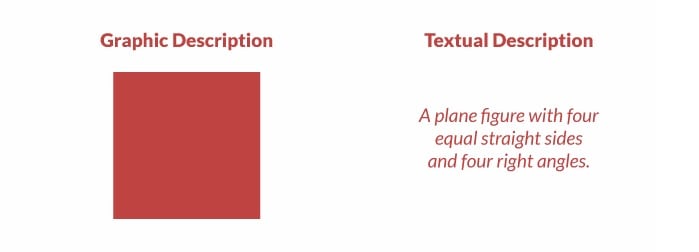Educational animation has been known for a while as a supportive tool in teaching. Maybe it’s not your first time hearing about using classroom animation but do you know does animation actually works? In other words, have you gotten a clue about how it can transform in-class learning? Thus, this article is to help you have a clear and valid insight into the power of animation in the classroom.
The Process of Learning
To better understand the power of classroom animation, it’s necessary to first understand the process of learning.
The learning process is complicated, so sometimes people aren’t willing to do in-depth research on it. Nevertheless, don’t be worried, all you need to know about it has been summarised here:
Concentrating ⟶ Understanding ⟶ Remembering
Concentrating is the first step in the learning process.
The first step requires educators to attract students’ attention and maintain it throughout the whole lesson.
Sometimes it isn’t too hard to attract students by, for example, playing a music video at the beginning of the lesson. But, the problem is, if you continue playing this video during the class, children can be distracted from learning. On the contrary, if you stop the music after the lesson has begun, students’ motivation and engagement for that lesson will automatically shut off. That’s why making students concentrate is the most challenging task for every teacher.

Recommended reading:
» 4 Tips to Get Students Attention in Online Learning
Understanding is the vital step following concentrating.
After students stay focused on the lesson, it’s time to make them understand the actual key ideas of the lesson. Your students won’t learn anything from the lesson if you don’t make it easy to understand. Therefore, for primary students, it is of prime importance that teachers make the lesson as easy to understand as possible.
Not only children but adults also struggle with understanding difficult topics. Depending on the age, we are met with different levels of difficulty. Thus, the challenge for teachers is to explain complex ideas in a way that students can understand. If not, students can’t get any valuable information from that class.

Remembering is the last and also the most valuable step in learning.
What if students can’t remember any knowledge after a lesson? How terrible it is if they forget everything and then come to the class with an “empty mind”. As a result, teachers would have to teach the same information again and again.
So, it is particularly true to say that remembering could be the key to evaluating the effectiveness of a lesson, a teaching method, and even a teacher’s ability. Moreover, better remembering the first time can support recalling that knowledge in the future.
To sum up, each of the three steps above has a vital role in students’ learning journey. They all go hand in hand and affect each other. However, concentrating is considered to be the most crucial yet challenging step for better learning. That’s because it’s the first step that sets the foundation for the ones after in the learning process.
How Using Animation in Education Boosts Students’ Learning Process
By now you have probably understood the process by which students learn. In this part, we will show you the power of animation in the classroom through its impact on the 3 steps of the learning process.
1. Benefit visual learners to attract and engage students
When 65% of the world’s population are visual learners, classroom animation becomes pretty beneficial for children’s learning. It is also more valuable to use animation in teaching because 90% of information transmitted to the brain is visual. By providing attractive visuals through animated characters and graphic details, animations attract and engage learners in the lesson. No academic reading theory is needed, children learn by watching fun but educational animated videos. We’re sure you can tell which one is more comfortable and interesting.
Moreover, it is a fact that no student belongs to only one learning style. Thus, most students enjoy animation in the classroom because they combine visuals with sound and movement rather than just plain images.
Read more:
Animation in primary education: How does it work?
2. Keep students concentrated through storytelling
Storytelling is the most outstanding feature of animation in the educational scenario. The art of storytelling makes every second of an animated video worthwhile.
In teaching, storytelling allows teachers to tell a story of knowledge engagingly. Imagine that you are learning through listening to a story. For sure, because you want to hear the end of the story, you will try your best not to miss any word. The innovation of this method lies not only in the content but also in how it is presented.
This classroom animation demonstrates the typical role of storytelling in representing knowledge in an interesting way. It delivers knowledge about mindfulness & how to mediate depression which is usually difficult to teach kids.
So if you can take advantage of storytelling, you will get students to concentrate on learning without them even noticing! We believe that storytelling will make it hard for students to lose their interest and attention once they have engaged in the story.
3. Simplify knowledge for better understanding
Classroom animation is now widely used because many people believe that it can help learners understand complex ideas more easily.
Do you know why visualization is vital for students’ understanding? Because it can explain abstract concepts in a concrete way that children can see. Students need to watch things happen to understand it. That’s why every primary school in the world has at least one lab for students to see the real thing happen. Perhaps learners at this age are also better at understanding a concept through direct practice and experience.
For example, the simple question as “What is the difference between poison and venom?” can be difficult to explain in a textbook. And yes, you could find a common answer somewhere. But just try to explain it by animation, you will see that the answer can be so much more funny yet informative. Take a look at the gif below and you will experience to find the answer.

4. Help store information for better remembering and recalling of knowledge
It’s evident that classroom animation helps students to learn faster than traditional teaching aids. Especially, visuals not only make the concept clear but also help children memorize it for a longer time. Do you know that human has a perfect pictographic memory used especially to store visual information? Surely an image of a red square is always better remembered than the sentence “a plane figure with four equal straight sides and four right angles”’.
Specifically, when it comes to animation in the classroom, the enigma is not only about remembering an image. It can be about memorizing a story that includes character, process, content, and the lesson. Therefore, if you want to use the knowledge in the future, it is more accessible to recall visuals than text.
Using Classroom Animation Effectively Transforms Learning
If you are reading this part, it means that you have now gained a genuine insight into how animation benefits students’ learning process in a class. This last part will show you the power of animation in support teachers in transforming learning, expressed in 3 main points below:
- From academic lessons to fun and informative knowledge to grab
Animation for teaching is famous for its ability to bring fun into the lesson. Fun but informative. Fun but still keeping the educational value. Because learning is most effective when it’s fun. Through captivating and stimulating illustrations, using animation in the classroom fights the boredom of dry content or technical subjects. Fun elements in animation can be delivered through relatable animated characters, cheerful voice-overs, or captivating storytelling.
However, pay attention to not overdo fun elements in animation if you don’t want to distract your students when learning. Take a look at the video below for a dose of inspiration. F. Learning Studio included fun elements but kept them at a minimum so that they don’t overshadow the knowledge.
Recommended reading:
» How not to make educational animation a distraction in eLearning
- From complex to easy-to-understand lessons
In classroom animation, complex concepts are made into digestible pieces through visualization. As we have repeated the power of visualization in simplifying content about a million times, you should probably believe us by now.
Or if you want to find out more about the benefits of visualization in explaining complicated things in the classroom, take a look at this article:
The power of visual in teaching and learning
- Bring learning to life
Visualization in classroom animation gives students a chance to see and experience the topic if it can’t be practiced. Sometimes animation can visualize the abstract or complicated process that is hard to see by normal eyes. Besides, the motion also helps things happen smoothly and lively as in reality for a better understanding.
For example, this short animated video shows how salt dissolves and then precipitates after being released into the water. Obviously, students couldn’t see the process happening in water even if they did it in a lab. You see, visualization and movements give a great explanation for the teachers in this case.
Conclusion
Now we hope that you have equipped yourself with a fair amount of knowledge on how using classroom animation can be super effective. However, all the above are just pieces of very obvious advantages when using animation for in-class teaching. To further see animation in action, check out our previous work first. However, there is no better way than experiencing it yourself. So, if you’re looking for solutions to make learning fun and increase knowledge retention, contact us for a FREE consultation. We’re happy to answer all matters related to educational animation.
- WhatsApp: (+84) 378 713 132
- Email: [email protected]
- Fanpage: https://www.facebook.com/f.learningstudio
- LinkedIn: https://www.linkedin.com/company/f-learning-studio/
Read further:
- How to make animation for educational purposes work
- How much does an educational animation cost per minute?

Sean Bui, the founder and creative director of F.Learning Studio, is a respected leader in the e-learning and multimedia production industry. With over 10 years of experience, he has dedicated his career to helping organizations create engaging and impactful learning experiences.
Under his leadership, F.Learning Studio has grown into a trusted partner for organizations in the education, healthcare, and corporate training sectors, producing over 2,000 minutes of educational animation.




![5 Best Animated Video Production Companies [Update 2023] 6 review 5 animated video production house](https://flearningstudio.com/wp-content/uploads/2021/06/312x200-5-420x370.jpg)

